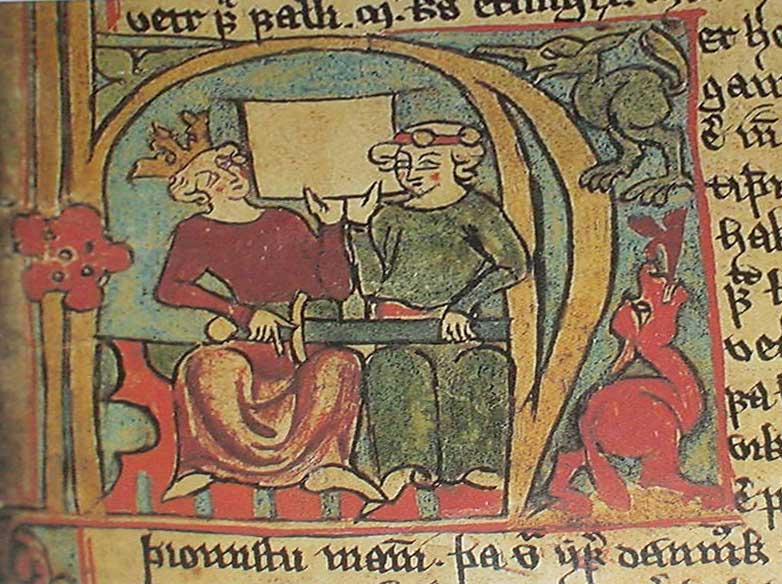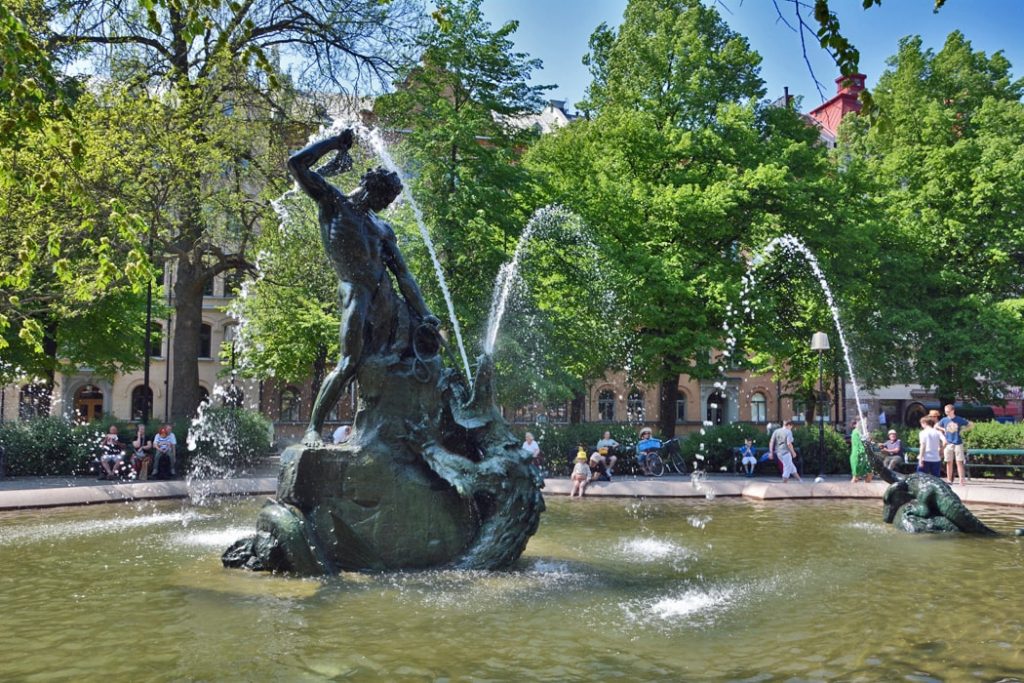Norse Paganism and Christianity are often at odds. Pagans are polytheistic (they worship many gods), while Christians are monotheistic (they worship just one god). When Christianity landed in the Nordic lands of Iceland, Denmark, Sweden, Scandinavia, and Norway, the two religions struggled to live harmoniously.
As Christian beliefs took hold amongst the Germanic people, Norse mythology began to fade away.
Let’s look at the obvious differences between the Christian faith and Norse Paganism and Christianity’s effect during the Viking age.
What is the Difference Between Norse paganism and Christianity?
Norse Paganism is the worship of many deities like Odin, Thor, Loki, and Baldr. Norsemen worshiped both Æsir and Vanir gods.
Christianity is a monotheistic religion that only worships one god in the manifestation of the father, the son, and the holy spirit.
Sacred Texts in Norse and Christian Beliefs
Old Norse Sacred Texts
Much of what we know and understand about the Norse gods comes from runic inscriptions, archaeological evidence from ceremonies, runes, and poetry.
The Poetic Edda is one of the best pre-Christian resources for old Norse sagas. Scholars are not entirely sure who wrote the poems of the Poetic Edda or how these translated works came to be.
It’s important to note that the Prose Edda, written by Snorri Sturluson, is a double-edged sword. While it provides excellent context and organization for Norse sagas that are easy to digest, it’s heavily influenced by Christian beliefs.
The old Germanic sagas were a way for Vikings to understand the world around them, much like the Romans and Greeks. These sagas were loose stories and poems passed down for centuries.
When Christianity appeared in Scandinavia, the Norse sagas took on a different shape and were greatly influenced by Christianity. For instance, the Christian concept of heaven and hell, the creation, and the apocalypse heavily influenced ideas like Yggdrasil, Hel, Valhalla, Ragnarök, and Asgard.
Christian Texts
The Christian faith follows the Old and New Testaments of the Bible.
The old testament was recorded between 1200 and 165 BC, and the New Testament was recorded in the first century.
Unlike the Nordic texts, the Bible worships one Christian god that is omniscient, omnibenevolent, and omnipotent (or all-knowing, all-loving, and all-powerful).
Were All Vikings Pagans Before Christianity?
Before Christianity infiltrated Scandinavia, the Germanic people of the Viking age were almost entirely pagan. They worshiped many gods and prayed for protection, power, and wisdom. Norse beliefs weren’t understood the same way we understand other organized religions.
The Vikings didn’t have a name for their belief system and didn’t worship the gods the same way Christians worship at churches. The understanding and sagas of Norse mythology were as commonplace as understanding the stars in the sky.
Today, we understand the practice of Pagan religions as Asatru, but during the Viking age, the worship of the gods was second nature.

Is Norse Paganism Older than Christianity?
Yes, Norse Paganism is understood as older as Christianity.
While the surviving texts of Christianity are older than many of the translated texts of the Poetic Edda, the oral traditions of the Old Norse religion trace back to the Bronze age, circa 3300 – 1200 BC. The tales and sagas of the Norse people trace as far back as there were Vikings.
Why Did the Norse Convert to Christianity?
The shift to Christianity wasn’t because the Vikings suddenly believed in the Christian faith. One of the biggest reasons that Nordic pagans shifted was primarily economic. As Christians infiltrated Nordic regions, there was much pressure to convert Pagans to establish trade networks.
The pressure was so great that Olaf Tryggvason revolted against the pagan king of Norway, king Hakkon Jarl. Olaf won the revolt, took over the land, and forced Norse pagans to convert to Christianity.
But the great conversion wasn’t always by force. As Vikings invited predominately Christian regions, they began adopting Christian practices, like church worship.
These Vikings operated under a hybrid of Paganism and Christianity for a while. By the 11th century, most Norse pagans had converted to Christianity by their own accord or by force.
Was There Violence Between Viking Pagans and Viking Christians?
The transition from paganism to Christianity was a long and violent road. Yet, as time marched on, the old Nordic religion began to slip away in favor of Christianity.
Vikings that invaded Christian lands often converted to Christianity, and this angered Vikings that still worshiped Odin and Thor. In the 13th century, Hákon (the Christian King of Norway) attempted to convert his people to Christianity.
While some Norwegians followed suit, others were engaged by the concept of abandoning their Norse deities like Thor and Odin. In rebellion, Norse pagans burned down Christian churches and tortured priests.

What is the Main Religion of Scandinavia Today?
Today, most Northern Europeans in Scandinavian countries still practice Christianity.
The region’s most predominant religion is Evangelical Lutheran, while many prefer not to subscribe to any organized religion.
Even though modern Scandinavians don’t worship Norse gods in the same way, they still hold the Old Norse sagas closely in their culture. There are many modern statues and tributes to the old gods, like the statue of Thor in Södermalm, Stockholm.

Does Norse Paganism Exist Today?
Today, Norse Paganism is referred to as Asatru.
While Norse Paganism fell away after Northern Europe’s Christianisation, it’s seeing a resurgence. It wasn’t until 1973 that it was recognized as a religion in the region. Modern practicing Norse pagans sample from the way of the Vikings and have religious leaders that serve as chieftains in modern ceremonies.
Since as last as 2007, Asatru has been one of Iceland’s fastest-growing religions. In just ten years, those that identify themselves as practicing Norse Paganism are up by a stagging 244 percent, and that number continues to climb.

